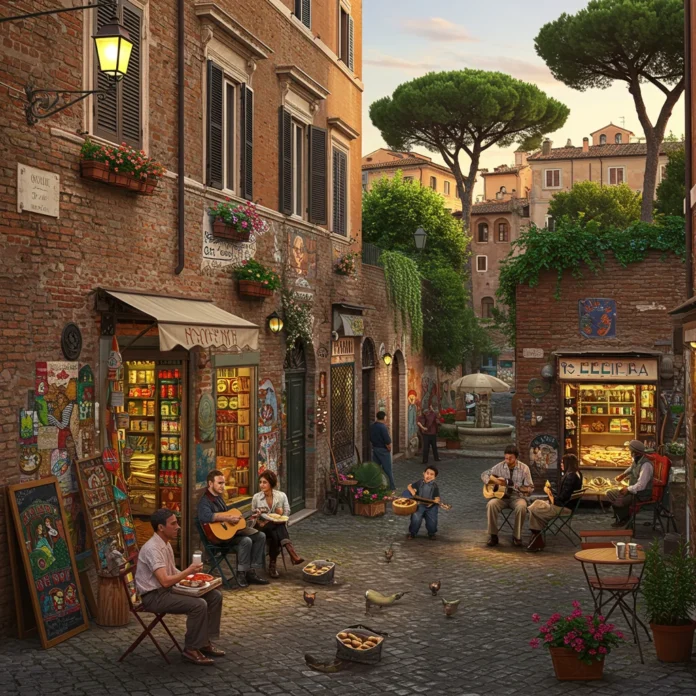Introduction: Discovering Rome Beyond Its Ancient Ruins
When we think of Rome, the Colosseum, Roman Forum, and Pantheon often come to mind first. These iconic sites are world-renowned for their historical significance and architectural brilliance. Yet, there is so much more to the Eternal City than its ancient ruins.
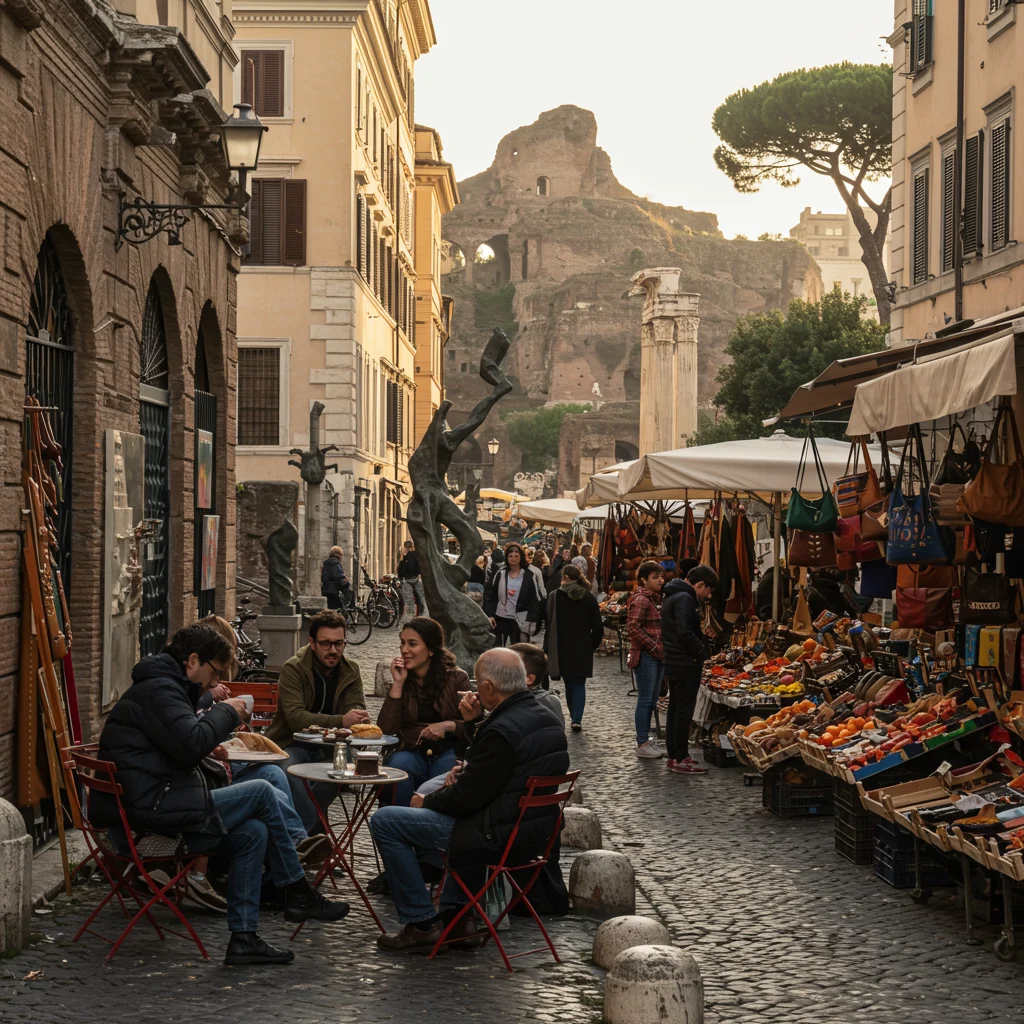
Rome is a living, breathing metropolis where centuries-old traditions exist alongside contemporary trends. Its neighborhoods pulse with local energy, inventive cuisine, and hidden corners that surprise even seasoned travelers. In this article, we invite you to join us as we look past the well-trodden ruins and uncover Rome’s unexpected sides, from quirky museums to vibrant street art and lush green spaces.
Why Look Beyond the Ruins? Exploring Rome’s Hidden Layers
While Rome’s ruins are undeniably impressive, they represent only one chapter in the city’s long and colorful history. By venturing off the usual tourist path, we find a city layered with stories, cultures, and experiences that go far beyond marble columns and crumbling amphitheaters.
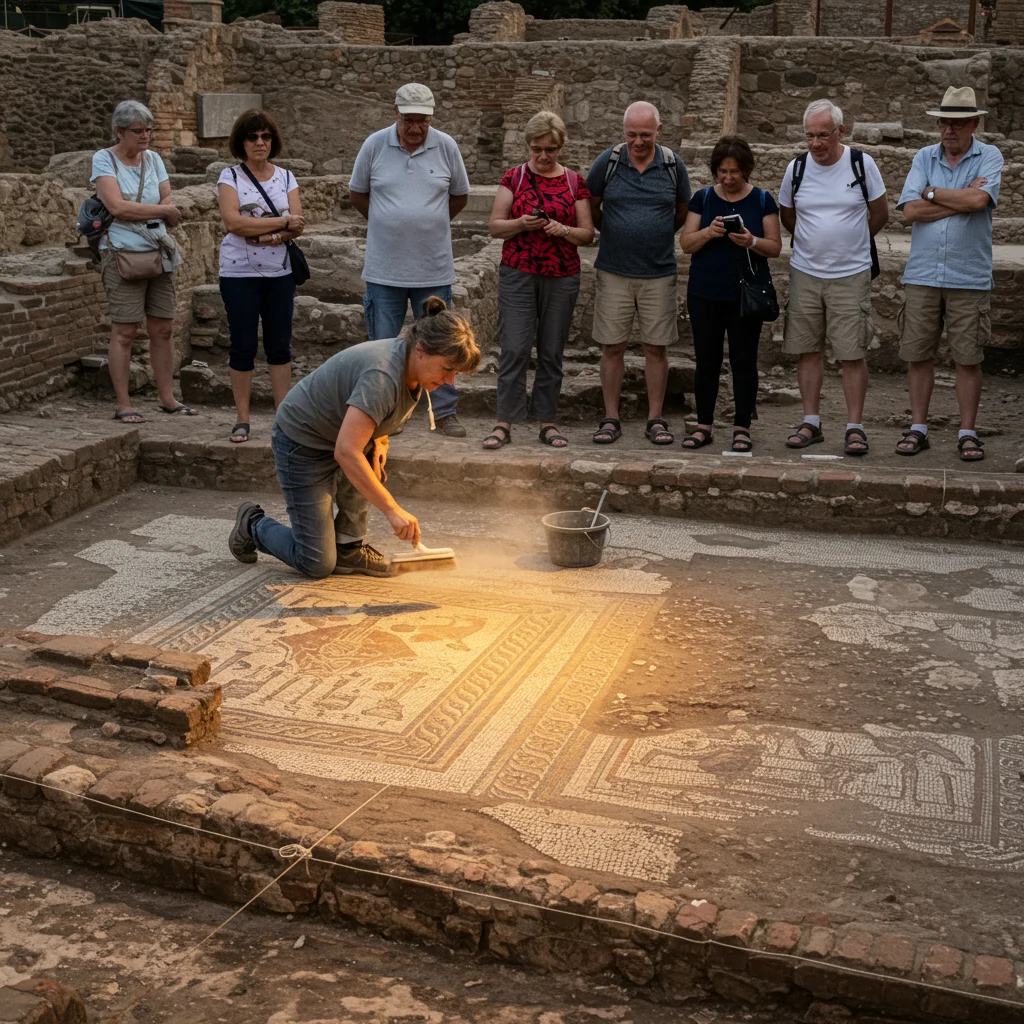
Exploring these lesser-known aspects allows us to connect with the real Rome: the city where locals live, work, and play. It’s in these hidden layers that we encounter authentic traditions, innovative art scenes, and diverse communities. This approach not only enriches our understanding of Rome but also makes our journey more memorable and meaningful.
How to Experience the Unexpected Side of Rome
To truly appreciate Rome’s lesser-known wonders, we suggest adopting a curious and open-minded approach. Instead of rushing from one famous landmark to another, slow down and take time to notice the details that make each neighborhood unique.
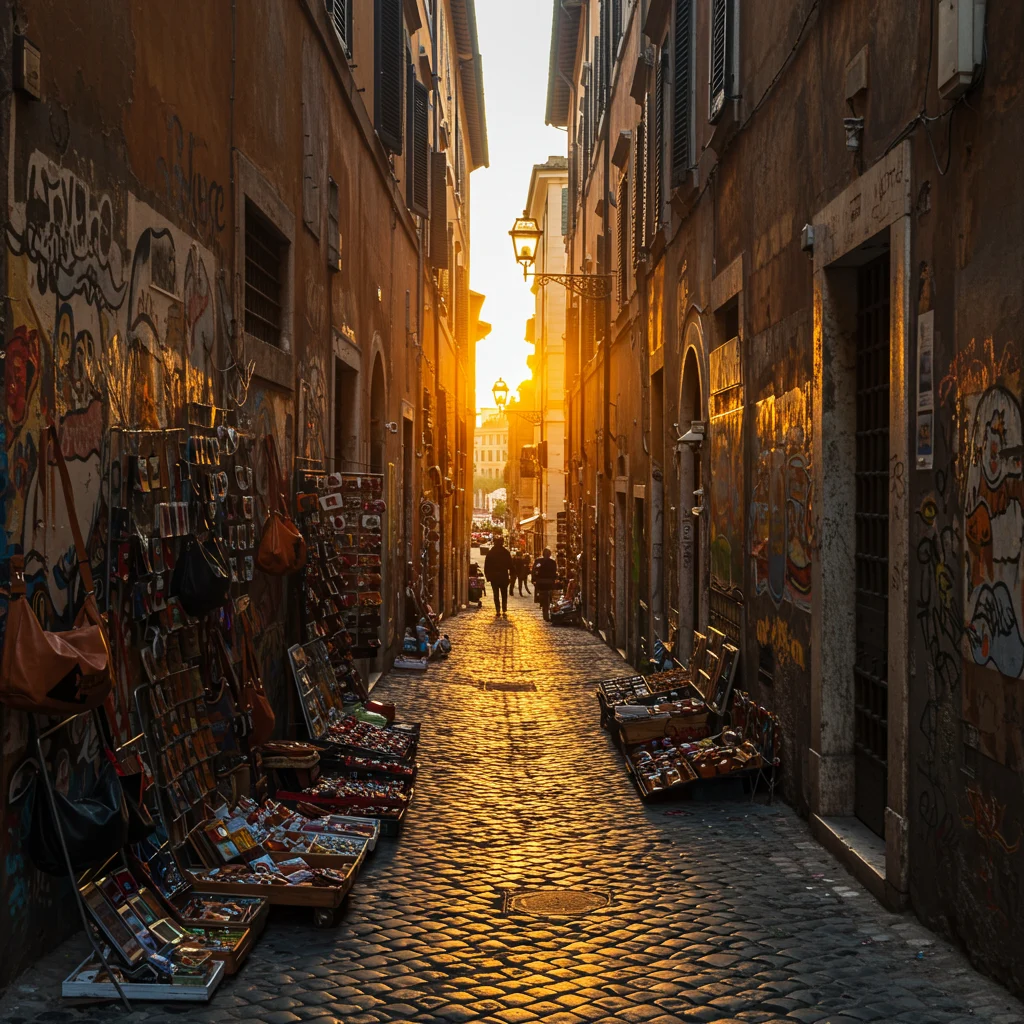
Consider joining a local walking tour, exploring street markets, or striking up a conversation at a neighborhood café. These experiences often lead to surprising discoveries, whether it’s a hidden courtyard, a community mural, or a traditional trattoria tucked away from the crowds. We encourage you to let your interests guide your journey and remain flexible with your itinerary.
Modern Rome: Where History Meets Contemporary Life
Rome is often described as an open-air museum, but it’s also a dynamic, modern city. Here, ancient ruins stand shoulder to shoulder with sleek galleries, cutting-edge architecture, and bustling nightlife. This contrast creates a unique atmosphere where the past and present constantly interact.
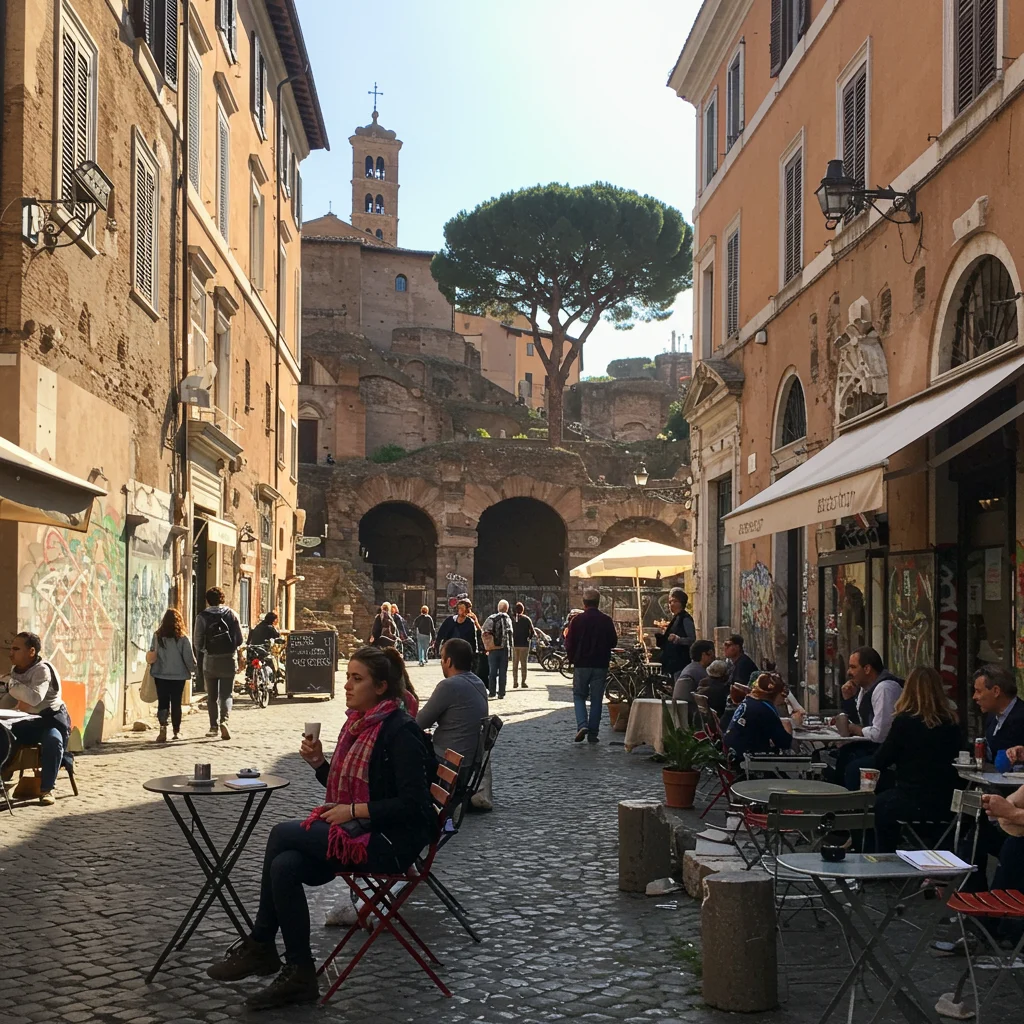
We can see this interplay in neighborhoods that host both centuries-old churches and experimental art spaces. Trendy restaurants and bars occupy former industrial buildings, while high-fashion boutiques sit just steps from medieval piazzas. This blend of old and new gives Rome its distinctive character and makes every visit a fresh experience.
What Are Rome’s Most Surprising Neighborhoods?
Many visitors stick to the historic center, but Rome’s outlying districts offer some of the city’s most vibrant and authentic experiences. Each neighborhood has its own personality, shaped by history, culture, and local traditions.
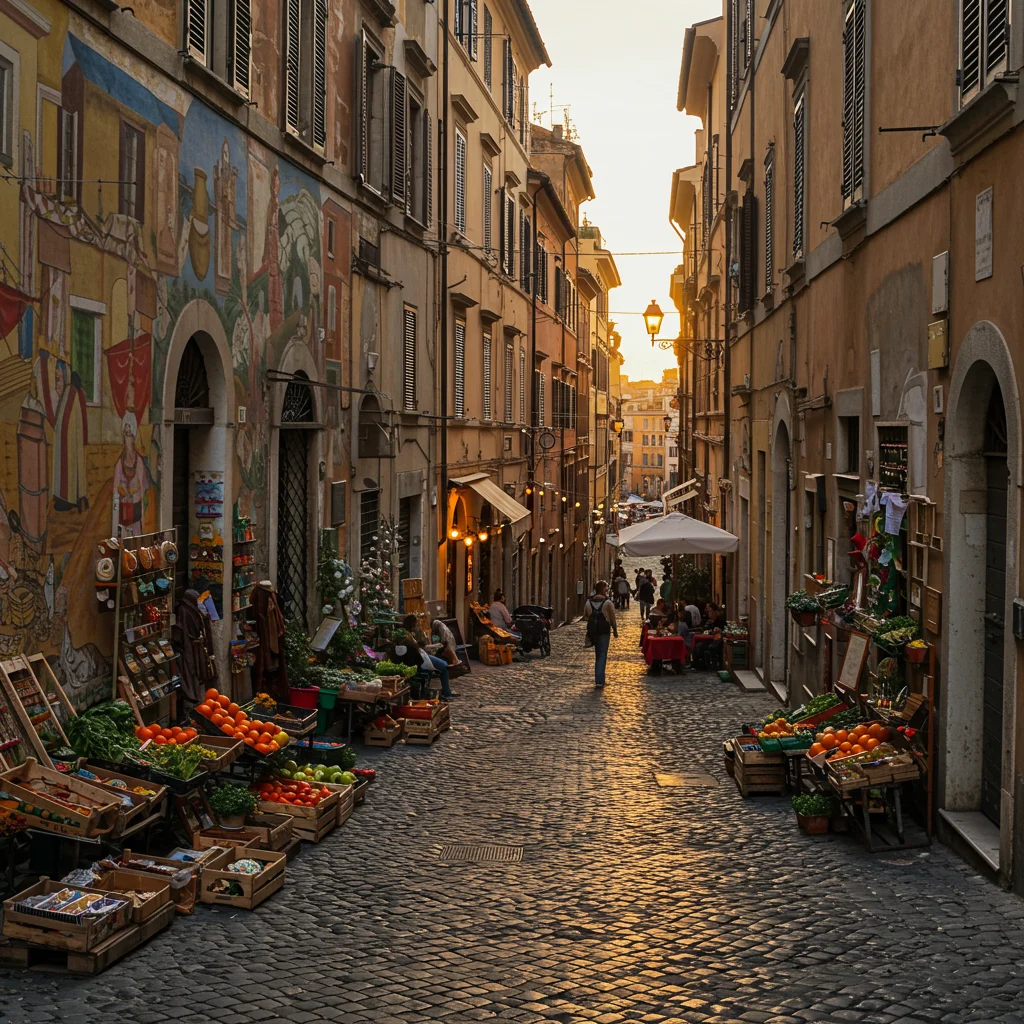
Let’s take a closer look at a few neighborhoods that may surprise you with their atmosphere, culinary delights, and creative energy.
Trastevere: Bohemian Charm and Local Vibes
Trastevere, on the west bank of the Tiber, is famous for its cobbled streets and lively piazzas. Here, laundry hangs from windows and the scent of freshly baked focaccia fills the air. This neighborhood is beloved by locals for its authentic Roman spirit.
By day, we can admire the medieval churches and enjoy a leisurely coffee at a sidewalk café. By night, Trastevere transforms into one of Rome’s liveliest areas, with bustling trattorias, street performers, and trendy bars. Its bohemian charm makes it ideal for those seeking a taste of the city’s true character.
Testaccio: Rome’s Culinary Heart
Testaccio is a neighborhood with deep roots in Roman food culture. Historically home to the city’s slaughterhouses, it has evolved into a culinary hotspot where tradition meets innovation. Testaccio’s markets, bakeries, and trattorias are legendary among food lovers.
We recommend sampling local specialties like coda alla vaccinara (oxtail stew) or trying inventive street food at the Mercato Testaccio. The area’s relaxed, down-to-earth atmosphere and focus on authentic flavors make it a must-visit for anyone interested in Rome’s gastronomic scene.
Pigneto: The Hipster’s Rome
Pigneto has gained a reputation as Rome’s creative hub. Once an industrial district, it’s now known for its street art, independent cinemas, and eclectic nightlife. The area attracts artists, musicians, and young professionals, creating a dynamic and multicultural vibe.
During the day, Pigneto’s main avenue buzzes with cafes, vintage shops, and record stores. In the evening, the neighborhood comes alive with live music venues and cocktail bars. If you’re seeking a glimpse of contemporary Roman culture, Pigneto is the place to be.
EUR District: Fascist-Era Architecture and Modernity
The EUR district stands out for its striking architecture and spacious boulevards. Originally designed for a 1942 world’s fair that never took place, EUR showcases imposing buildings from the Fascist era, such as the iconic Palazzo della Civiltà Italiana.
Today, EUR is home to business centers, museums, and lush parks. Its unique blend of monumental architecture and modern amenities offers a very different perspective on Rome, far from the ancient ruins of the city center.
Hidden Art and Architecture: Beyond the Colosseum
Rome’s artistic heritage extends far beyond its ancient monuments. Throughout the city, we find unexpected museums, contemporary galleries, and creative public spaces that showcase a different side of Roman artistry.
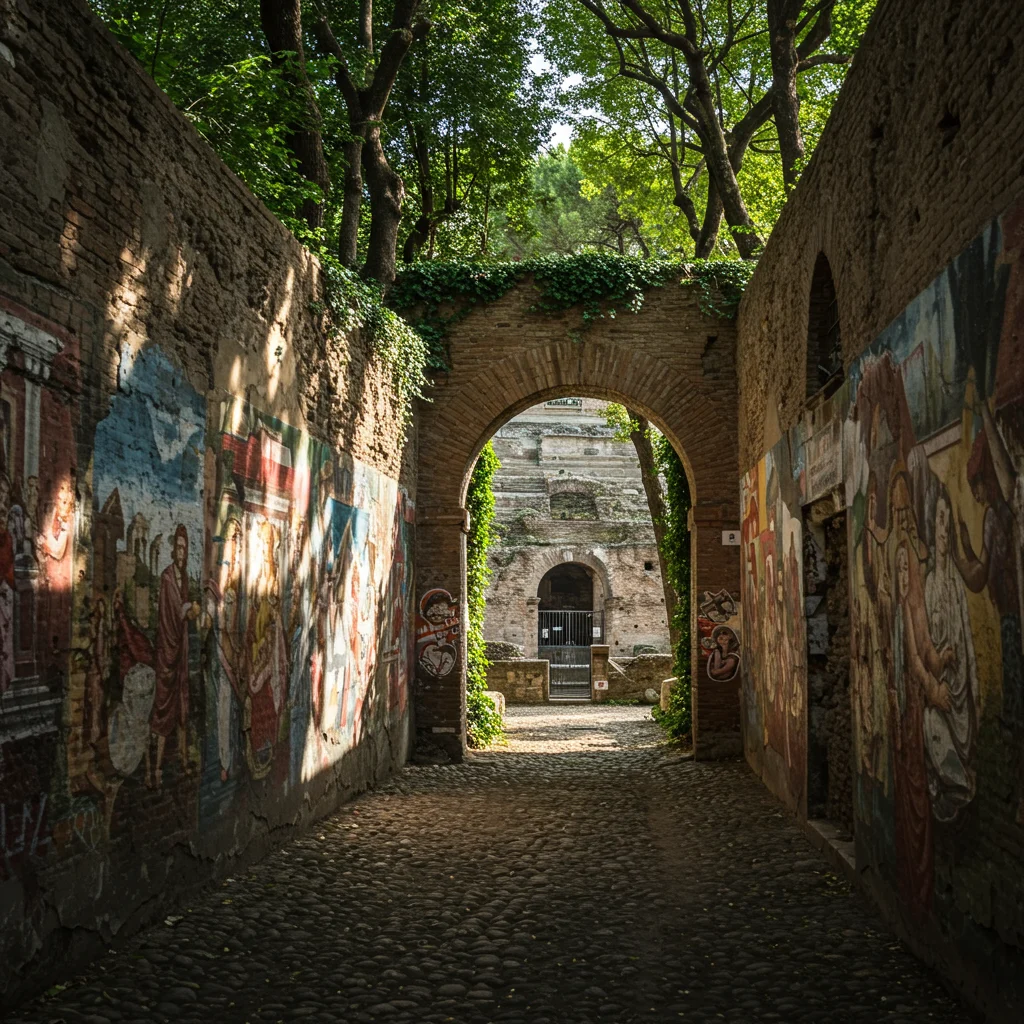
From industrial-chic exhibition halls to churches filled with macabre relics, Rome offers a rich tapestry of visual experiences. Let’s highlight some of the city’s most intriguing art and architectural sites that often go unnoticed.
What Unique Museums Does Rome Offer?
Rome is home to an array of museums that challenge our expectations. While the Vatican Museums and Galleria Borghese are famous, several lesser-known institutions provide a fresh perspective on art, history, and culture.
Whether you’re interested in ancient sculpture, avant-garde installations, or the supernatural, there’s a museum in Rome to spark your curiosity.
Centrale Montemartini: Ancient Statues in an Industrial Setting
Centrale Montemartini offers a striking contrast between classical art and industrial machinery. Housed in a former power plant, this museum displays ancient Roman statues among massive turbines and boilers.
This unexpected juxtaposition highlights both the beauty of ancient craftsmanship and the power of early-20th-century engineering. Art lovers appreciate the unique atmosphere, while history enthusiasts enjoy learning about Rome’s industrial past.
MAXXI: Contemporary Art and Architecture
The MAXXI, or National Museum of 21st Century Arts, is Rome’s leading contemporary art institution. Designed by architect Zaha Hadid, the building itself is a masterpiece of modern design, with flowing lines and bright, open spaces.
Inside, we find rotating exhibitions of painting, sculpture, photography, and installations by Italian and international artists. The MAXXI is a testament to Rome’s ongoing creative evolution and a hub for those interested in architecture and the arts.
Museo delle Anime del Purgatorio: A Spooky Curiosity
For a truly unusual experience, the Museo delle Anime del Purgatorio (Museum of the Holy Souls in Purgatory) houses a collection of relics said to be touched by souls seeking prayers. The small museum, located in the Church of the Sacred Heart of Suffrage, features burned books, handprints, and other mysterious artifacts.
While some may find it eerie, the museum offers a fascinating glimpse into Roman Catholic beliefs about the afterlife and the city’s long history of religious devotion.
Street Art in Rome: Where to Find Urban Creativity
In recent years, Rome has gained recognition for its vibrant street art scene. Murals, graffiti, and installations breathe new life into once-overlooked neighborhoods, transforming blank walls into canvases for local and international artists.
Urban art in Rome is not only visually striking but also reflects the city’s social and political conversations. Let’s examine some of the best places to appreciate this creative energy.
Ostiense District Murals
Ostiense has become a hotspot for large-scale murals and street art festivals. Once an industrial area, it now features works by well-known artists such as Blu and JB Rock.
We recommend taking a stroll along Via del Porto Fluviale and the surrounding streets to see colorful depictions of Roman history, pop culture, and contemporary issues. The art here often changes, so each visit offers something new.
Tor Marancia’s Painted Buildings
Tor Marancia, a residential district in southern Rome, is famous for its “Big City Life” project. This initiative transformed the facades of apartment blocks into massive, brightly colored murals.
The project involved artists from around the world, each contributing a unique perspective. The result is an open-air gallery that brings art directly into the community, making it accessible to all.
Unexpected Churches: Sacred Spaces Off the Beaten Path
Rome’s churches are renowned for their artistic treasures, but some lesser-known sanctuaries offer surprises for those willing to look beyond the obvious. These places combine spiritual significance with fascinating histories and unusual architecture.
Let’s introduce two churches that stand out for their unique features and stories.
Santa Maria della Concezione dei Cappuccini: The Bone Church
This small church on Via Veneto is best known for its crypt, which contains the bones of over 4,000 Capuchin monks. Arranged in elaborate patterns, the bones create a macabre yet strangely beautiful display.
The crypt serves as a reminder of mortality and the transience of life. Visitors often leave with a sense of awe at the artistry and reverence on display.
San Clemente: Layers of History
San Clemente is not just a church but a journey through centuries of Roman history. Built on top of earlier Christian and pagan sites, the current basilica sits above a 4th-century church and a 1st-century Mithraic temple.
Descending through the layers, we experience firsthand the complex history of religious life in Rome. The mosaics, frescoes, and ancient ruins beneath San Clemente make it a must-see for anyone interested in archaeology and spirituality.
Food Adventures: Rome’s Surprising Culinary Scene
Roman cuisine is much more than pizza and pasta. Across the city, innovative chefs and passionate vendors are redefining traditional flavors, while street food culture thrives in unexpected corners.
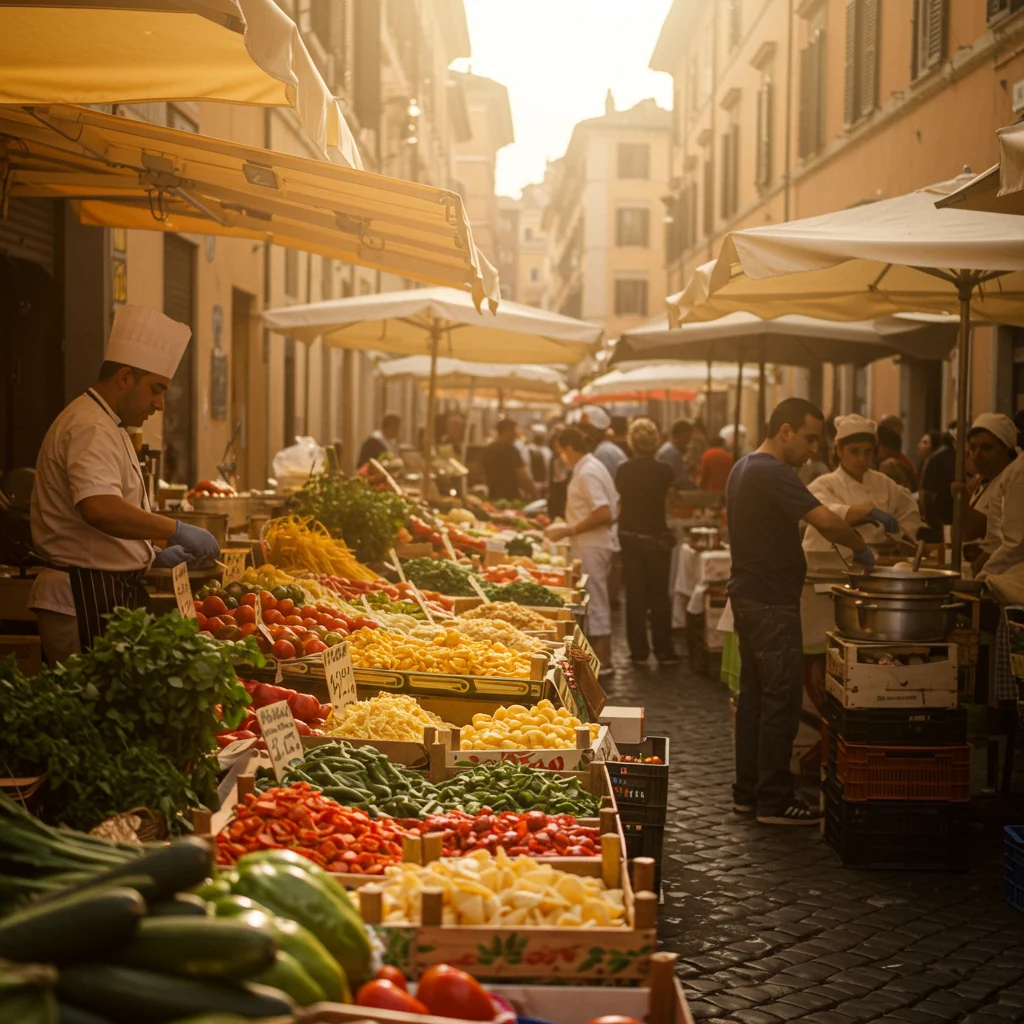
We invite you to join us on a culinary adventure through Rome’s markets, snack bars, and local eateries, where every meal tells a story.
Where Can You Find Rome’s Best Street Food?
Rome’s street food scene has exploded in popularity in recent years. From savory snacks to sweet treats, the city offers a wide variety of quick bites that reflect its diverse culinary heritage.
Let’s explore two street food favorites that you won’t want to miss during your Roman adventure.
Trapizzino: Rome’s Iconic Street Snack
Trapizzino is a modern twist on classic Roman flavors. This handheld snack features a pocket of pizza dough filled with traditional stews or sauces, such as pollo alla cacciatora or eggplant parmigiana.
Invented by a local chef, trapizzino has become a sensation among both locals and visitors. It’s the perfect way to sample Roman comfort food on the go.
Supplì: The Classic Roman Snack
Supplì are deep-fried rice balls stuffed with mozzarella and ragù. Crispy on the outside and gooey on the inside, they’re a staple of Roman street food culture.
You’ll find supplì at pizzerias, bakeries, and food stalls throughout the city. They’re an ideal snack for exploring neighborhoods or enjoying a quick lunch between sightseeing stops.
Unusual Markets: Where Locals Shop
Rome’s markets are more than places to buy groceries. They serve as social hubs where residents gather, share stories, and celebrate the flavors of their city.
We highlight two markets that offer a glimpse into daily Roman life and provide plenty of opportunities to try local specialties.
Mercato Testaccio
Mercato Testaccio is a modern, airy market that showcases the best of Roman food culture. Here, dozens of vendors sell everything from fresh produce and cheese to street food and artisanal goods.
The market is a favorite among chefs and foodies, who come for the high-quality ingredients and lively atmosphere. We suggest arriving hungry so you can sample as much as possible.
Mercato Trionfale
Located near the Vatican, Mercato Trionfale is one of the largest covered markets in Rome. With hundreds of stalls, it offers an incredible variety of regional products, from cured meats to handmade pasta.
This market is less touristy than others, giving visitors a chance to interact with local vendors and discover authentic Roman flavors.
Nature and Green Spaces: Rome’s Urban Oases
Despite its reputation as a city of stone and marble, Rome is filled with lush parks, gardens, and green spaces. These tranquil spots provide a welcome respite from the hustle of urban life.
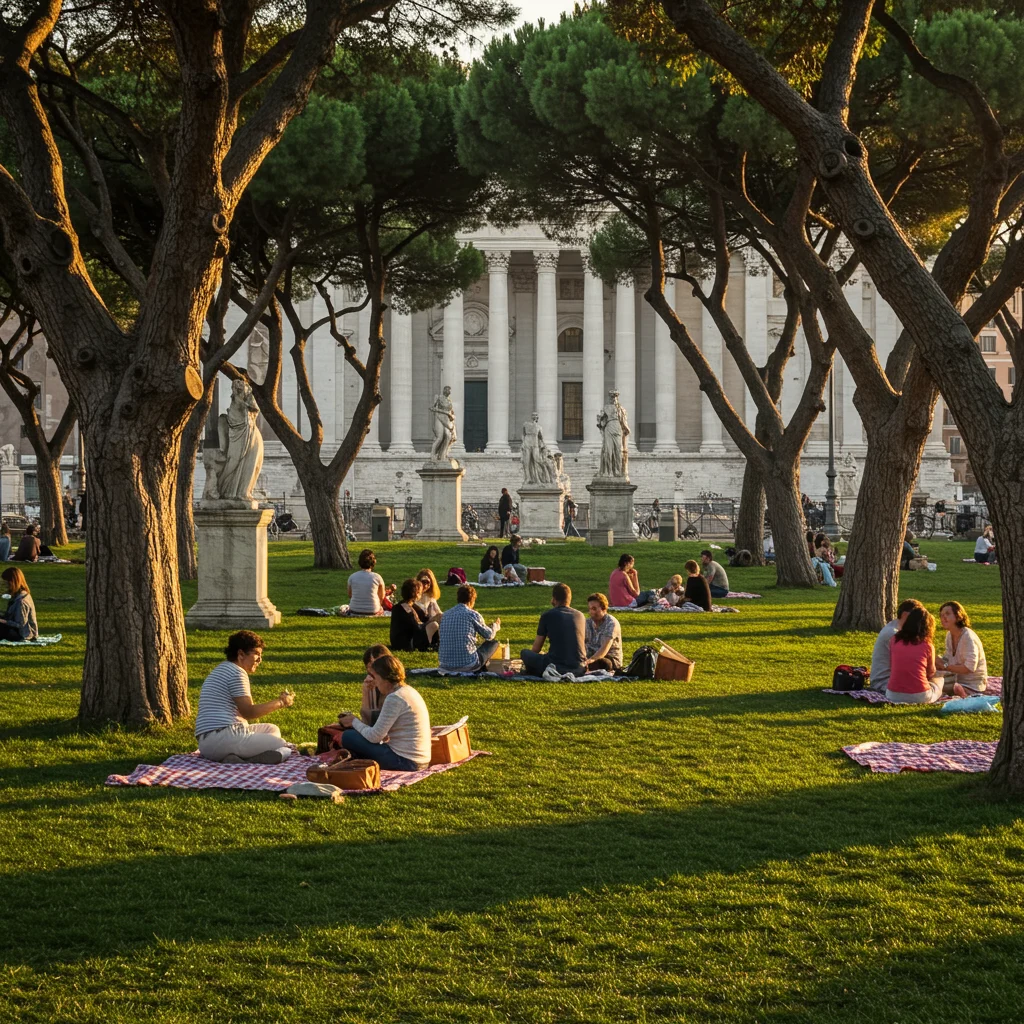
Let’s highlight some of the most beautiful and unexpected places where we can reconnect with nature in the heart of the city.
What Are Rome’s Most Beautiful Parks?
Rome’s parks range from grand historic estates to hidden corners with stunning views. Each offers a different way to enjoy the outdoors and appreciate the city’s natural beauty.
Here are a few of our favorite green spaces that go beyond the usual tourist routes.
Villa Borghese: More Than Just a Park
Villa Borghese is Rome’s largest public park and a cultural destination in its own right. In addition to manicured gardens and shady pathways, the park is home to museums, theaters, and a picturesque lake.
We recommend renting a bike or rowing a boat for a leisurely afternoon. Art lovers can visit the Galleria Borghese, while families enjoy the zoo and playgrounds scattered throughout the grounds.
Appia Antica Regional Park: Ancient Roads and Open Spaces
The Appia Antica Regional Park follows the route of the ancient Appian Way, one of Rome’s oldest and most important roads. The park combines archaeological sites, open meadows, and wooded trails.
Walking or cycling here provides a peaceful contrast to the city center, with views of ancient tombs, aqueducts, and rolling countryside.
The Orange Garden (Giardino degli Aranci): A Secret Viewpoint
The Orange Garden, perched on the Aventine Hill, is a small but enchanting park known for its fragrant citrus trees and panoramic views of the city.
This peaceful spot is popular with locals seeking a quiet escape and visitors hoping to capture stunning photos of Rome’s skyline, especially at sunset.
Tiber Island: An Unexpected Escape
Tiber Island, or Isola Tiberina, sits in the middle of the Tiber River and has served as a place of healing for centuries. Today, it’s a charming destination with a hospital, restaurants, and a scenic riverside promenade.
In summer, Tiber Island hosts outdoor festivals and open-air cinemas, making it a lively spot for evening strolls or riverside dining.
Rome’s Unique and Quirky Attractions
Beyond its grand monuments, Rome is filled with attractions that surprise and intrigue. These offbeat sites offer a different perspective on the city’s history, culture, and sense of humor.
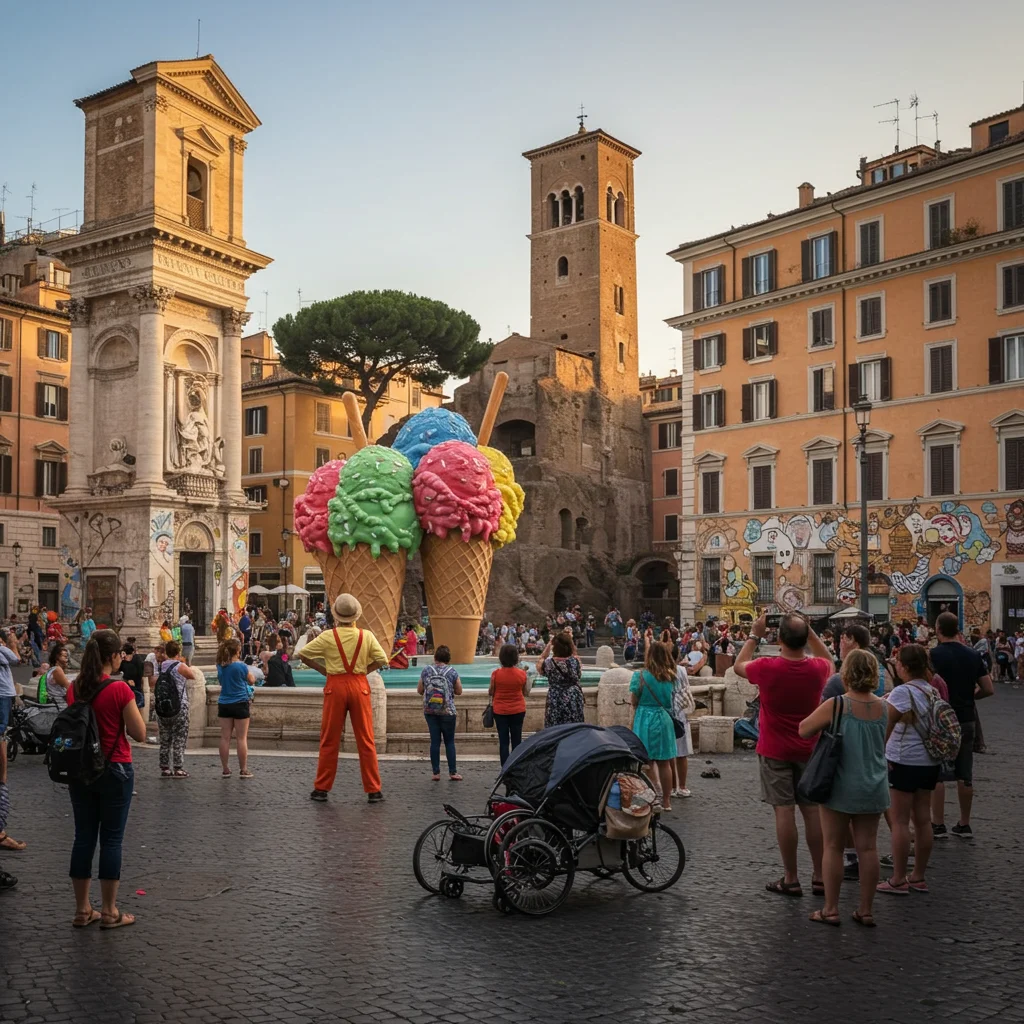
Let’s take a look at some of the most unusual places you can visit in Rome, from quirky museums to mysterious landmarks.
What Are Rome’s Most Unusual Museums?
Rome’s museums are not limited to fine art and ancient history. Several institutions focus on curious, unexpected, or even playful subjects, appealing to those who enjoy the unconventional.
Here are two museums that stand out for their originality.
Museum of the Holy Souls in Purgatory
As mentioned earlier, the Museum of the Holy Souls in Purgatory offers a unique religious and supernatural experience. Its collection of mysterious relics, said to bear the marks of souls seeking prayers, provides a glimpse into the spiritual imagination of past centuries.
This tiny museum is a favorite among those interested in the intersection of faith, folklore, and the unknown.
National Museum of Pasta
Pasta lovers will appreciate the National Museum of Pasta, which celebrates Italy’s most famous food. The museum traces the history of pasta making, from ancient tools and recipes to modern production methods.
Interactive exhibits and displays of rare pasta shapes make this a fun and educational stop for visitors of all ages.
The Mouth of Truth: Fact or Fiction?
The Mouth of Truth, or Bocca della Verità, is a marble mask located in the portico of the Basilica of Santa Maria in Cosmedin. According to legend, it will bite the hand of anyone who tells a lie.
While the story is likely a medieval invention, the Mouth of Truth remains a popular photo spot and conversation piece. Many visitors line up to test their honesty and snap a memorable picture.
The Keyhole of the Knights of Malta: A Secret View
On the Aventine Hill, a simple door hides one of Rome’s most enchanting secrets. Peering through the keyhole of the Knights of Malta’s gate, visitors see a perfectly framed view of St. Peter’s Basilica, surrounded by manicured hedges.
This hidden perspective is the result of careful landscaping and architectural alignment. It’s a favorite stop for those who appreciate a bit of mystery and artistry.
Underground Rome: What Lies Beneath the City?
Beneath Rome’s busy streets lies a network of tunnels, crypts, and ancient structures that tell the city’s deeper stories. Exploring underground Rome reveals layers of history often overlooked by visitors.
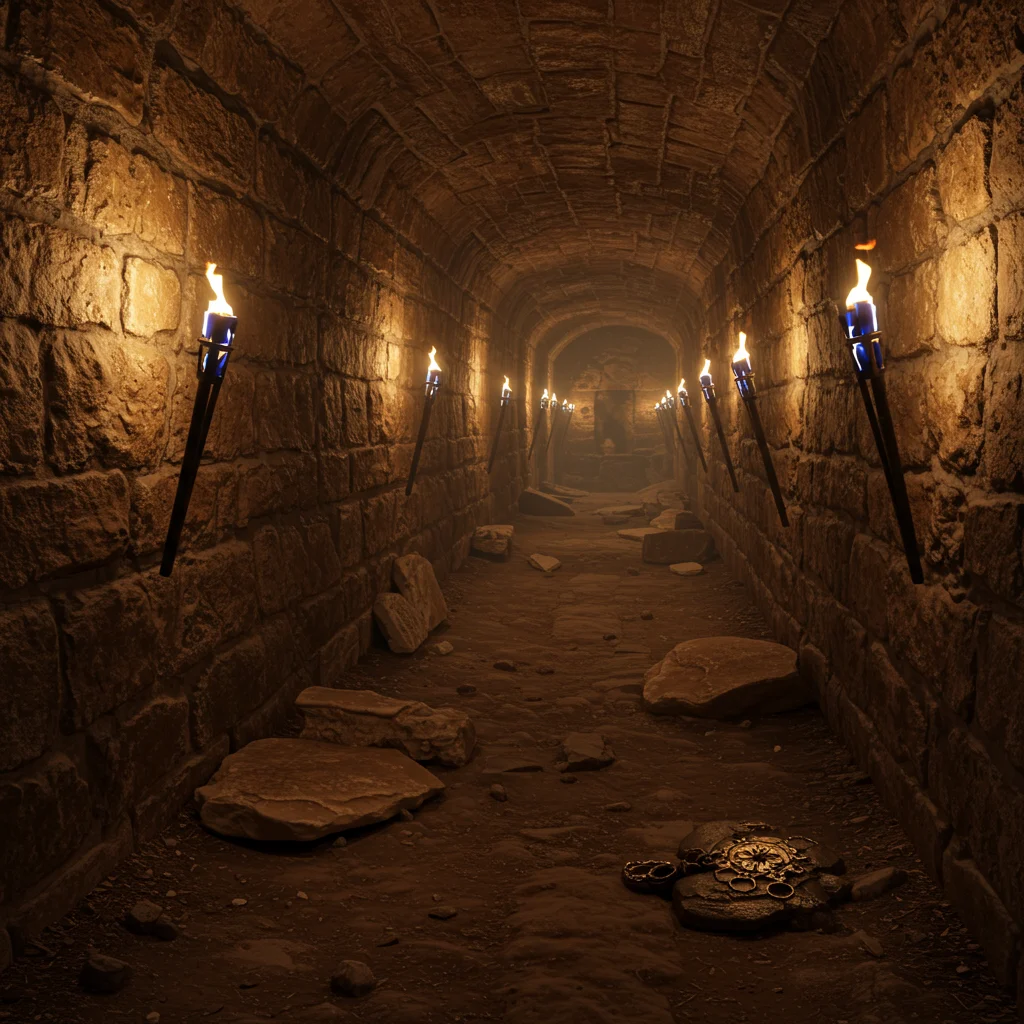
We’ll introduce you to some of the city’s most fascinating subterranean sites, each offering a unique window into the past.
Catacombs: Exploring Rome’s Subterranean World
Rome’s catacombs are a network of underground burial chambers dating back to the early Christian era. Carved into soft volcanic rock, these tunnels served as cemeteries and places of worship for centuries.
Popular catacombs include San Callisto, San Sebastiano, and Domitilla. Guided tours provide insights into ancient burial practices, religious art, and the challenges faced by the early Christian community.
Crypta Balbi: Layers of Urban History
The Crypta Balbi museum explores the evolution of a single city block from ancient times to the present. Excavations have uncovered Roman theaters, medieval workshops, and Renaissance-era buildings, all layered atop one another.
Visitors can tour the underground ruins and view artifacts that illustrate how Rome has changed and adapted over the centuries.
Basilica di San Clemente: Three Churches in One
As mentioned earlier, the Basilica di San Clemente is remarkable for its archaeological complexity. Descending through the structure, we find a 12th-century church, a 4th-century basilica, and a 1st-century Mithraic temple, each representing a different era.
This immersive experience helps us understand how Rome’s spiritual and architectural heritage has developed layer by layer.
Day Trips from Rome: Surprising Escapes Nearby
While Rome offers endless opportunities for adventure, the surrounding region is filled with destinations worth a short journey. Easy day trips allow us to experience ancient ruins, lush countryside, and charming towns, all within reach of the city.
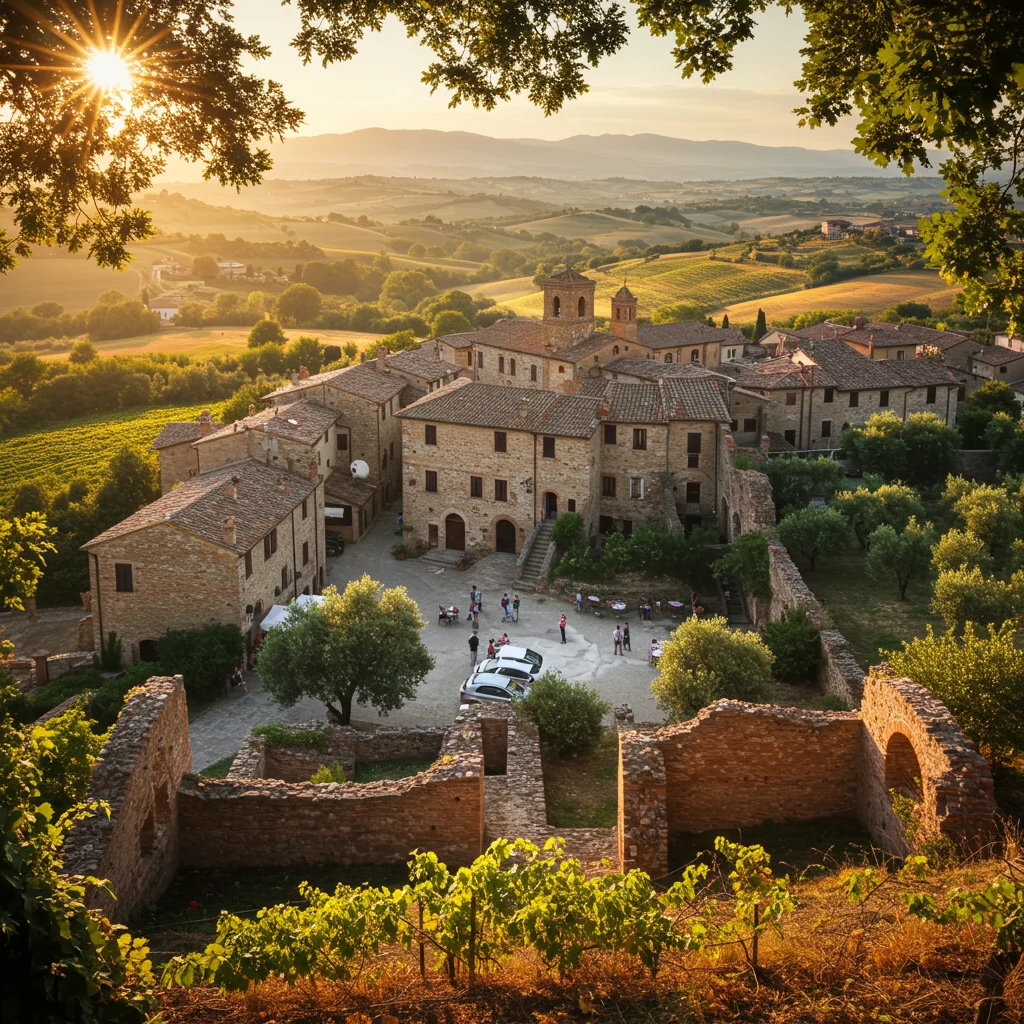
Here are three favorite escapes that offer a refreshing change of scenery and plenty of surprises.
Ostia Antica: Rome’s Ancient Port Town
Ostia Antica was once the bustling port of ancient Rome. Today, it’s an archaeological park where we can walk along ancient streets, visit well-preserved mosaics, and imagine daily life in a Roman harbor town.
The site is less crowded than the city’s central ruins, allowing for a relaxed and immersive visit. It’s a perfect destination for those who love history and archaeology.
Tivoli: Villas and Waterfalls
Tivoli, just east of Rome, is famous for its stunning villas and gardens. Villa d’Este’s fountains and Renaissance landscaping inspire visitors with their beauty, while the ancient Villa Adriana (Hadrian’s Villa) offers a glimpse into imperial luxury.
Tivoli’s natural setting, with dramatic cliffs and waterfalls, makes it an ideal spot for a day of art, history, and relaxation.
Castelli Romani: Wine, Food, and Countryside
The Castelli Romani, a group of hill towns southeast of Rome, are known for their local wines, hearty cuisine, and beautiful landscapes. Towns like Frascati and Ariccia offer traditional dishes and panoramic views of the surrounding countryside.
A visit to the Castelli Romani is a chance to experience rural Italian life, sample regional specialties, and escape the city’s bustle for a day.
Seasonal Surprises: What to Experience in Rome Throughout the Year
Rome’s character changes with the seasons, offering different experiences and events throughout the year. Whether you prefer spring festivals or winter markets, there’s always something special happening in the city.
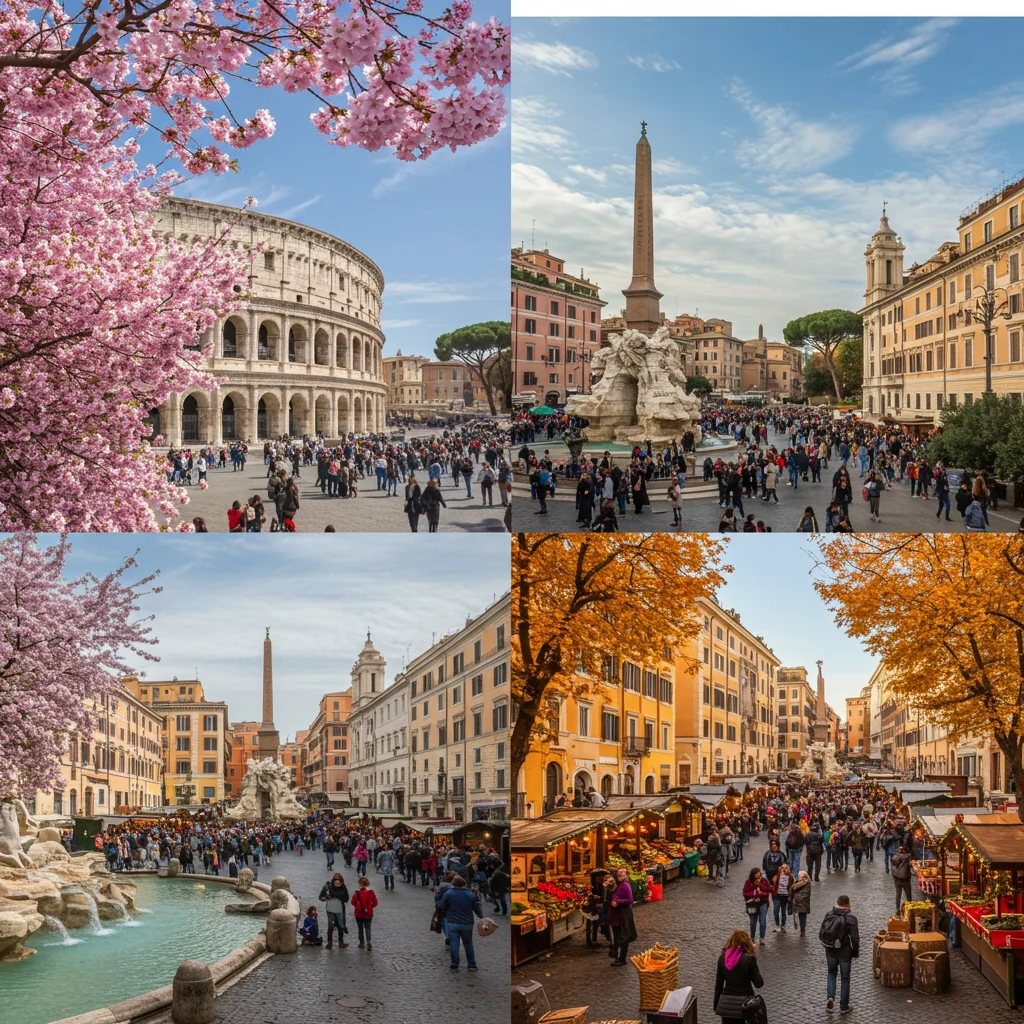
Let’s take a closer look at what each season brings to Rome.
Spring: Flower Festivals and Outdoor Events
Spring is a wonderful time to visit Rome, as gardens burst into bloom and outdoor festivals fill the calendar. The city’s parks, such as Villa Borghese and the Orange Garden, are especially beautiful during this season.
Events like the Festa della Primavera and the Rose Garden’s annual opening invite us to enjoy the city’s natural beauty and festive spirit.
Summer: Open-Air Cinema and Nightlife
Summer in Rome brings warm evenings and a lively outdoor scene. Open-air cinemas set up in piazzas and parks, showing classic films under the stars. Rooftop bars and riverside venues offer cool drinks and live music.
It’s also the season for night walks, when illuminated landmarks create a magical atmosphere. For more on unique sports experiences, check out what to expect at Stadio Olimpico for an authentic taste of Roman passion.
Autumn: Food Festivals and Harvests
Autumn is harvest season in Rome and the surrounding countryside. Food festivals celebrate local produce, from chestnuts and mushrooms to new wine and olive oil. Markets and trattorias feature seasonal menus with hearty dishes.
The cooler weather and vibrant foliage make this a great time for exploring both the city and nearby rural areas, such as the Castelli Romani.
Winter: Christmas Markets and Nativity Scenes
Winter in Rome is marked by festive lights, Christmas markets, and elaborate nativity scenes. Piazza Navona transforms into a holiday fair, while churches throughout the city display handcrafted presepi (nativity displays).
This season offers a quieter, more intimate side of Rome, with fewer crowds and a cozy atmosphere in cafes and bakeries.
Offbeat Shopping: Where to Find Unique Souvenirs in Rome?
Shopping in Rome can be much more than browsing designer boutiques or souvenir stalls. The city is home to vintage markets, artisan workshops, and curiosity stores that offer one-of-a-kind finds.
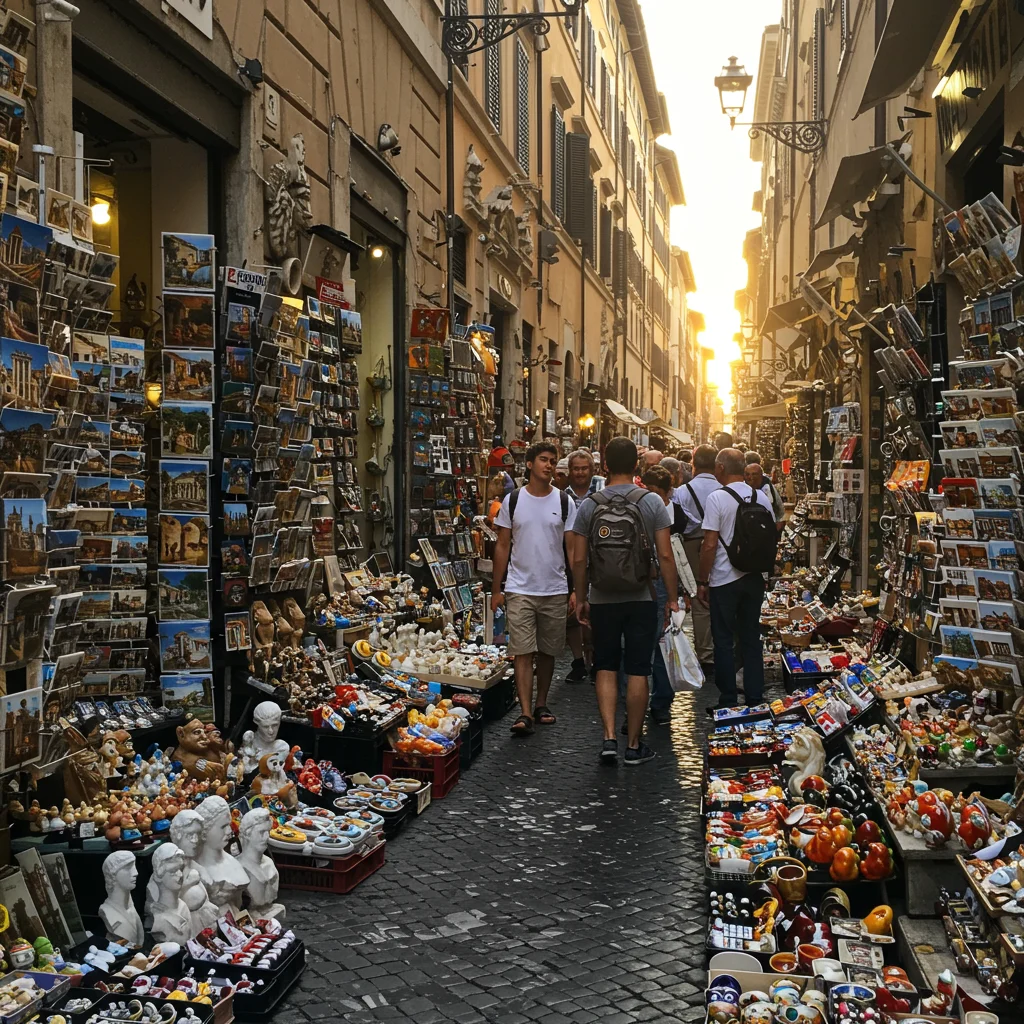
Let’s explore some of the best places for unique shopping experiences in the Eternal City.
Vintage Markets and Artisan Boutiques
Rome’s vintage markets are treasure troves for fashion enthusiasts and collectors. Spots like Porta Portese and Mercato Monti feature clothing, accessories, and antiques from various eras.
Artisan boutiques in neighborhoods like Trastevere and Monti showcase handmade jewelry, ceramics, and leather goods. These shops are ideal for finding souvenirs with a personal touch.
Bookshops and Curiosity Stores
Independent bookshops and curiosity stores add a literary and whimsical dimension to Rome’s shopping scene. Places like Libreria Fahrenheit 451 and Otherwise Bookshop offer a curated selection of Italian and foreign titles.
Curiosity stores, filled with vintage objects, prints, and quirky gifts, provide endless inspiration for thoughtful souvenirs.
Rome After Dark: Unique Nighttime Experiences
As the sun sets, Rome reveals a different side. Nighttime brings illuminated monuments, lively music, and secret bars where locals gather to unwind.
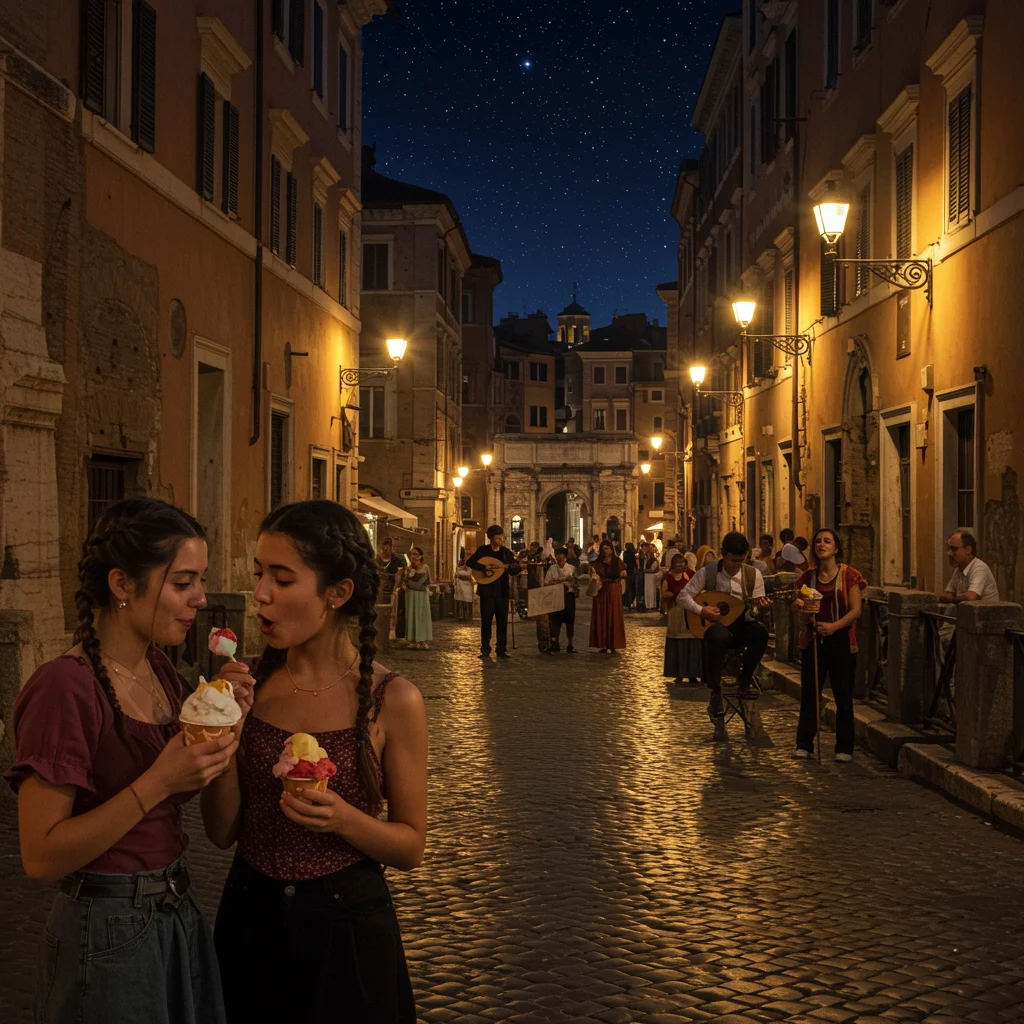
We recommend exploring the city after dark for a truly memorable Roman experience.
Night Walks and Illuminated Landmarks
Night walks through Rome’s historic center offer a peaceful and atmospheric way to appreciate its beauty. Landmarks like the Colosseum, Trevi Fountain, and St. Peter’s Basilica glow under dramatic lighting, creating unforgettable views.
Guided evening tours often include stories and legends that add depth to the city’s nighttime allure. For those interested in similar experiences in other cities, you might enjoy reading about strolling through Old San Juan at night.
Live Music and Secret Bars
Rome’s live music scene spans jazz clubs, indie venues, and open-air concerts. Neighborhoods like Trastevere and Pigneto are known for their eclectic nightlife, with both established clubs and hidden speakeasies.
Secret bars, often tucked behind unmarked doors, provide a sense of adventure and exclusivity. Ask locals for recommendations or keep an eye out for discreet entrances.
How to Plan Your Off-the-Beaten-Path Roman Adventure
Planning a unique Roman adventure requires a bit of research and a willingness to try new things. With so many options, it’s helpful to prioritize your interests and stay flexible during your visit.
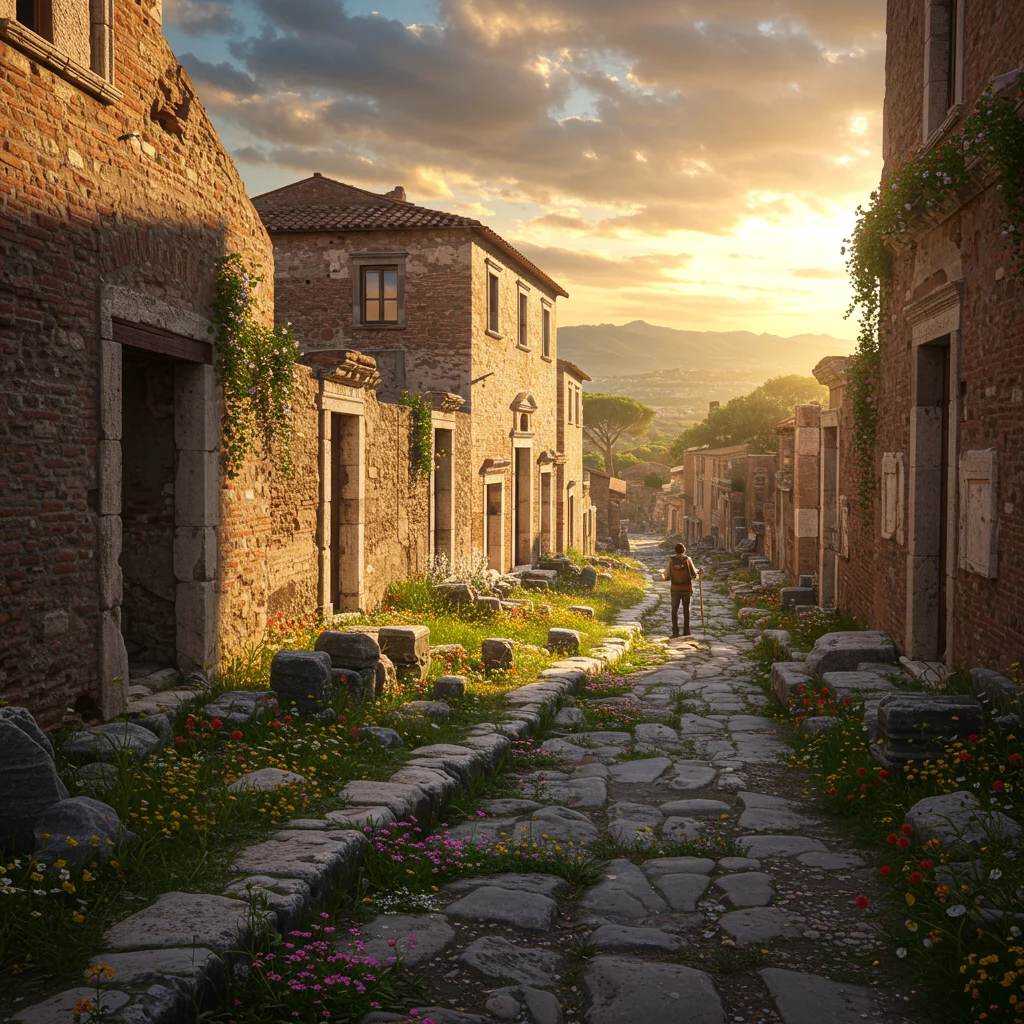
Here are a few tips and suggested itineraries for making the most of Rome’s unexpected side.
Tips for Navigating Lesser-Known Sights
To access hidden gems, we recommend using public transportation or renting a bicycle. Many neighborhoods are best explored on foot, so comfortable shoes are a must.
Consider visiting popular sites early or late in the day to avoid crowds. For tickets to unique attractions or special events, booking in advance can save time and guarantee entry.
Recommended Itineraries for Curious Travelers
A day in Trastevere and Testaccio could include street art, local markets, and a meal at a family-run trattoria. For art lovers, combine a visit to MAXXI with a stroll through the Ostiense murals.
If you’re interested in day trips, consider pairing Ostia Antica or Tivoli with a relaxing afternoon in the Castelli Romani. For those planning a longer Italian journey, you might be interested in exploring the Amalfi Coast or even a quick tour of Venice.
For travelers who enjoy vibrant city experiences outside of Italy, check out some ideas for cultural tours in Miami for inspiration.
Conclusion: Embracing the Unexpected in Rome
Rome is a city that rewards curiosity and a sense of adventure. By looking beyond its famous ruins, we uncover neighborhoods, museums, and experiences that reveal the city’s true spirit. Whether you’re savoring street food in Testaccio, admiring murals in Ostiense, or relaxing in the Orange Garden, each moment offers a new perspective on the Eternal City.
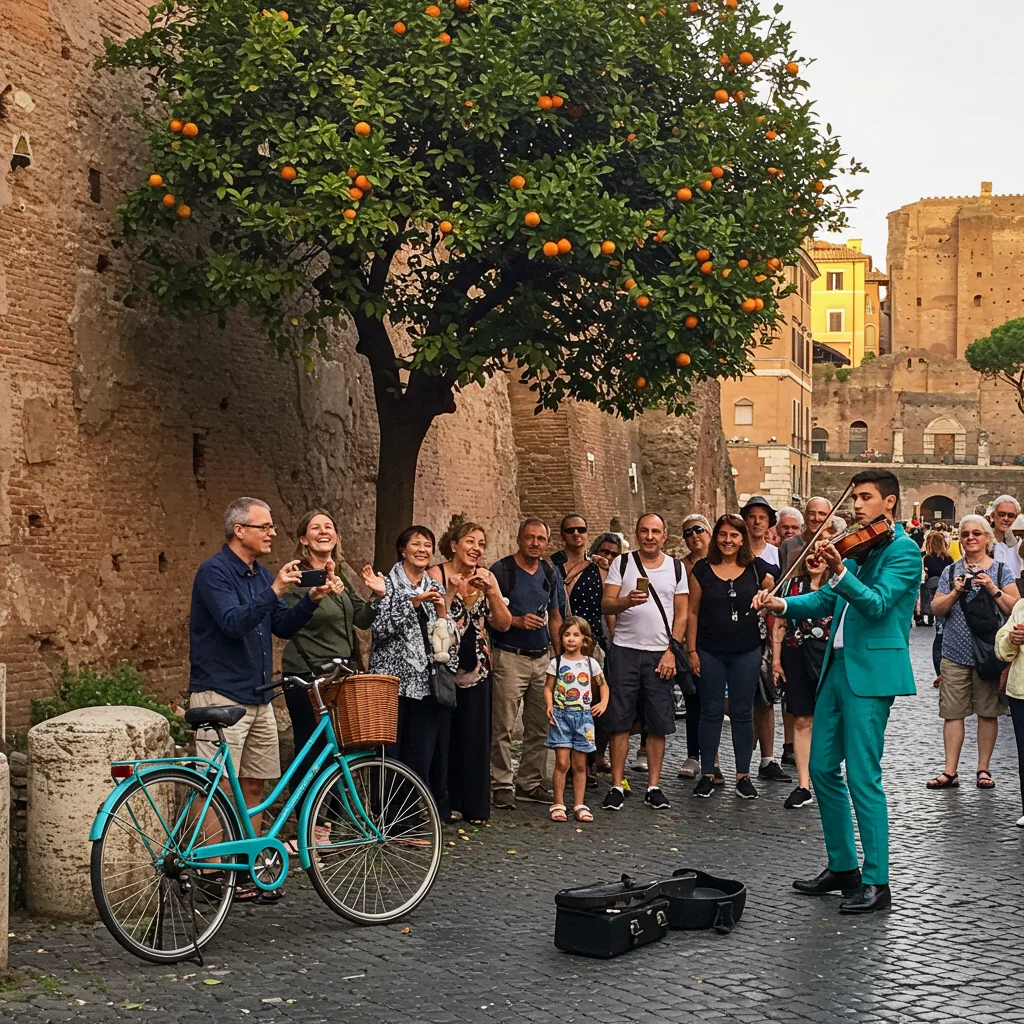
If you’re ready to plan your own unique Roman journey, we recommend visiting Tour Cuts for more travel tips and inspiration. Wherever your interests lead you, Rome’s surprises are sure to leave a lasting impression.

